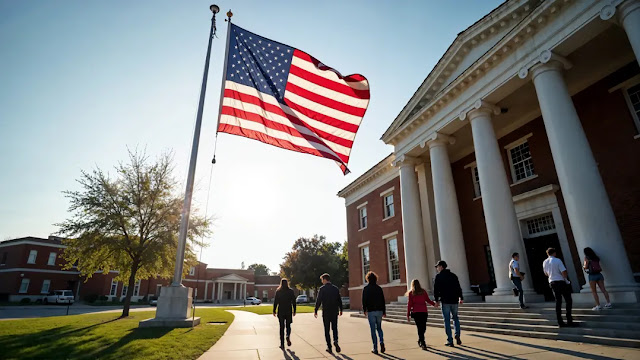The U.S higher education system is highly diverse and probably the largest in the world. The country has thousands of institutions with diverse programs thus providing many opportunities where students can pursue different degrees. This paper discusses the population of higher education institutions in U.S, the institutional types and the challenges or opportunities that the sector encounters.
The U.S has a Number of Higher Education Institutions
By the 2023-2024 academic year, there are around 5,819 higher learning institutions in the U.S. This consists of universities, colleges, community colleges and vocational institutions and has a wide scope of programs starting with associate degree up to doctoral degree.
Breakdown of Higher Education Institutions
The institutions are divided into several categories:
| Institution Type | Number of Institutions | Primary Focus |
| Four-Year Institutions | 2,691 | Bachelor’s, master’s, and doctoral degrees. |
| Two-Year Institutions | 1,496 | Associate degrees, vocational training, and certificates. |
| Less-than-Two-Year Institutions | 1,632 | Short-term programs, certificates, and diplomas. |
Institution types of Higher Education
The U.S higher education system incorporates a number of various institutions, which address the needs of different students and educational requirements:
- Public Universities and Colleges: These universities and colleges are supported by state governments and have lower tuition fees charged to in-state students and also enroll more students.
- Private Universities and Colleges: These universities and colleges are supported through tuition, donations and endowments and have usually fewer students and are usually in a position to offer more personalized learning.
- Community Colleges: Community colleges provide associate degrees, and job training. They are seen to be less expensive and a launching pad to students to move onto four year universities.
- For-Profit Institutions: They are privately owned schools and are profit oriented. They tend to offer flexible, online programs, however, they are accused of having high tuition costs, and low completion rates.
Issues In higher education in the U.S.
Though the size of the U.S. higher education institutions is overwhelming, there are a number of issues that impact the accessibility and affordability:
- Increased Tuition: Tuition has risen sharply and made it expensive to send kids to college imposing a financial burden on students and families.
- Student Loan Debt: As tuition increases, students have been borrowing more money and this has turned out to be a huge problem to most graduates.
- Access and Equity: Higher education is not equally accessible to all students. The students who belong to low-income families or are underrepresented tend to have incredible odds against them.
The U.S Higher Education System Opportunities
Nevertheless, the U.S. higher education system has a number of opportunities:
- Online Education: Schools are becoming more and more accessible and flexible to students with fully online or hybrid programs.
- Workforce Development: Schools are also gearing their programs towards industry demands giving students skills necessary in the new work environment.
Conclusion
The U.S has more than 5,800 institutions of higher learning offering huge choices to students. Although the industry has some issues, including the increase in tuition fees and the problem of access, there is also the possibility of innovation, improved access to education, and the ability to match the workforce demands. The future of the U.S higher education is full of growth and development prospects.
Key Takeaways
- In the U.S, 5,819 institutions provide a wide opportunity to students.
- Examples of these institutions are public universities, private colleges, community colleges and specialized schools.
- The affordability and student loans are also a problem.
- There is increasing online learning and training.
References:
- National Center for Education Statistics (NCES). The Condition of Education 2023. U.S. Department of Education, Institute of Education Sciences. nces.ed.gov
- Federal Reserve. Student Loan Debt in the United States. 2023. federalreserve.gov
- Inside Higher Ed. The State of Higher Education in America. insidehighered.com
